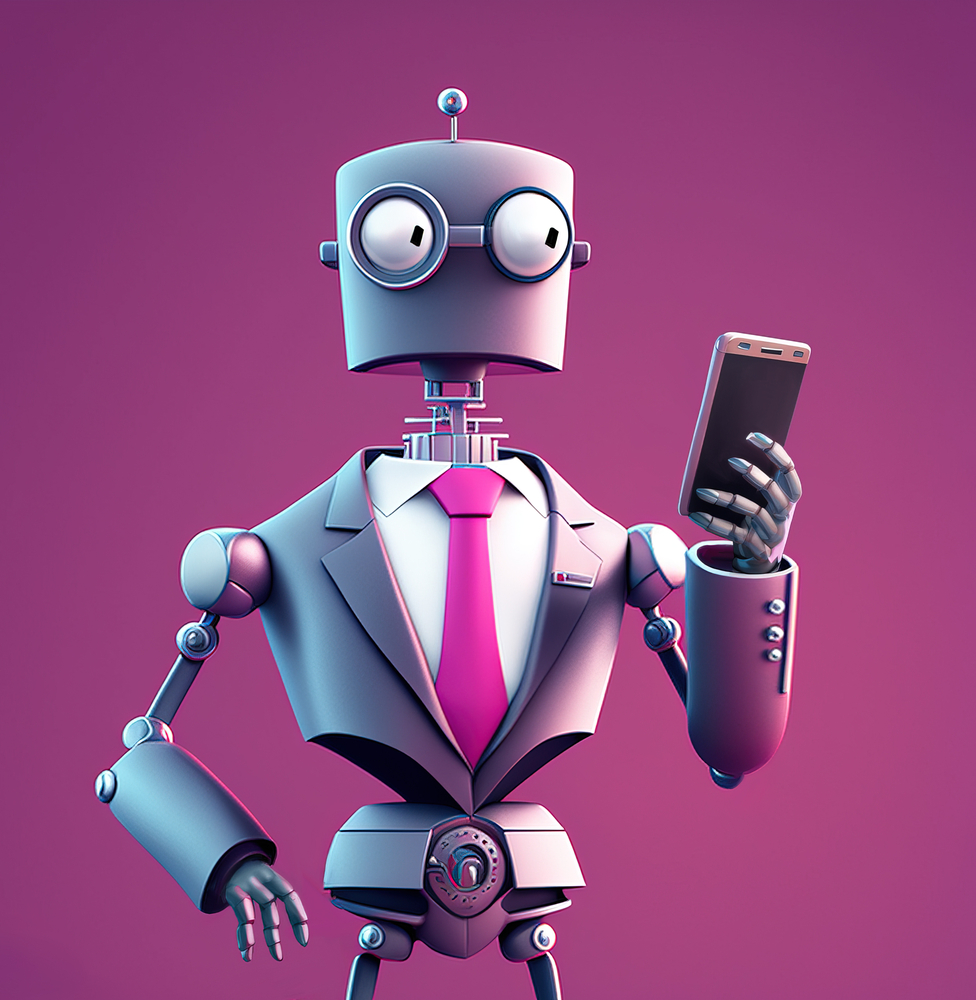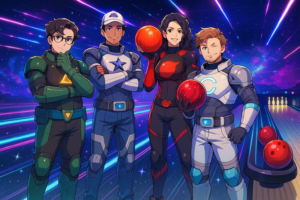
AI art and music are quite amazing. In seconds, you can create fun images. To wit, below is a photorealistic image I created with ChatGPT of Adam Smith and David Hume having lunch and Hume sticking Smith with the bill:

Or a cartoon image of my summer bowling league team, the Cosmic Colonels:

Both of these had zero monetary cost. I told GTP what I wanted, it generated them, and now I can share them.
Among artists (by which I mean both those who generate art for art’s sake and those who generate art professionally, like graphic designers), AI is hotly controversial. Professional artists understandably fear that AI will take their jobs. Let’s use the “economic way of thinking” to analyze those fears and see what is most likely.
Let’s start with the most basic, uncontroversial element of economic thinking: that demand curves slope downward. That means that as price rises, quantity demanded falls (and vice versa).
AI is relatively cheap for the user (as low as $0) compared to professional artists, so the law of demand suggests that people will demand more art. This means people now demand original art for lower-marginal-benefit uses. A reason demand curves slope downward is the law of diminishing marginal utility: As one consumes more of a good, one gets less satisfaction from each unit consumed. Consequently, when acting as consumers, people seek to satisfy the highest marginal uses first and then move on to lower marginal uses. This is why when the price of something is high, it tends to be used for high marginal value tasks as opposed to low marginal value tasks.
So, as the price of art falls due to AI, more art is being consumed for low-marginal-benefit uses. Uses like: creating a cartoon image of a bowling team or imagining David Hume as a cheapskate and bad friend. These uses are not eliminating jobs because these images did not exist at a higher price; I am not paying an artist a commission to draw an image for a joke in a blog post.
But what of the higher-margin uses of art? At the lower price, could AI displace art that was previously supplying those uses, thus generating more consumer surplus (at the expense of producer surplus)? That certainly will happen, to some degree. Indeed, if the market were perfectly competitive (that is, if AI art were a perfect substitute for professional art), we should expect complete substitution of AI art for human-produced art.
But for high-marginal-use art, the goals are different. One isn’t making a cartoon image as an in-joke among friends, but producing commercial products, a customized portrait, or something else the person values highly. AI may be able to replicate some of those tasks, but not all. AI, for all its wonders, is not intelligent. It is a computer program. When dealing with AI, there is no “meeting of the minds” as with an artist. AI isn’t particularly good at interpreting human communication. It can be surprisingly difficult to get AI art to do what you want sometimes, and how it interprets prompts can be a mystery (even to the AI!). With a human artist, communication can be much easier.
Consequently, I expect the market to bifurcate. One branch will be the low-marginal-use art. That will flourish, but not cost any jobs. The other branch will be high-marginal-use art, where humans will likely still dominate. Where that bifurcation occurs will be where jobs are lost. The intramarginal[1] artist would likely lose their job to AI. Who they are and how many artists that represents, I cannot say. But I do not expect AI to be the existential crisis some consider it for art creation and the art industry.
——
[1] Reminder: I am using “marginal” here in the economic sense. These are artists who are operating right at the margin, right at the point of bifurcation. “Marginal” does not imply that they are low-talent. Rather, for whatever reason, the work they are producing is very close in value from the buyer’s perspective to what can be produced by AI.

READER COMMENTS
Garrett
Aug 12 2025 at 10:48am
Among horses (by which I mean both those who trot for trotting’s sake and those who trot professionally, like stagecoach pullers), the automobile is hotly controversial.
Jon Murphy
Aug 12 2025 at 11:36am
That’s actually a good illustration of my point. Note that neither horseback riding nor stagecoach pulling have been totally eliminated by automobiles. For a good number of people, they can now drive around when quick movement wasn’t an option before (because horses were, and still are, relatively more expensive than an automobile). But horses, and carriages, remain an option for recreation. A fairly popular one, too.
Garrett
Aug 12 2025 at 12:37pm
First they came for the horses
And I did not speak out
Because I was not a horse
Jon Leonard
Aug 12 2025 at 1:16pm
It seems like a substantial portion of the controversy is that the AI models are trained off of existing artists’ work, in ways that look very much like violation of copyright. To the extent that they’re stealing artist’s work and then using it to compete with the artists, we should expect some pushback. I don’t think we have the copyright balance quite right from a legal perspective, but ignoring the rules isn’t really better.
Garrett
Aug 12 2025 at 1:37pm
I think the June ruling that Anthropic’s training on “legally obtained” books was fair use and transformative opens the path for a similar argument for art. The next question would be what constitutes “legally obtained.”
The Midjourney/Stable Diffusion lawsuit will answer a lot of questions about all this
Jon Murphy
Aug 12 2025 at 1:42pm
The copyright issue is an important one, but is only tangentially related to my point.
Matthias
Aug 12 2025 at 8:02pm
Your conclusion seems true for as long as AI art remains worse than the best human art. Which is true today.
But what if it gets better? What if AI also takes the higher end of the market?
Jon Murphy
Aug 12 2025 at 9:07pm
That’s why I had the discussion about the meetings of the minds. AI is very hard to talk to and to make it understand. It converses, but there is not exchange if information. It just keeps repeating its programming again and again.